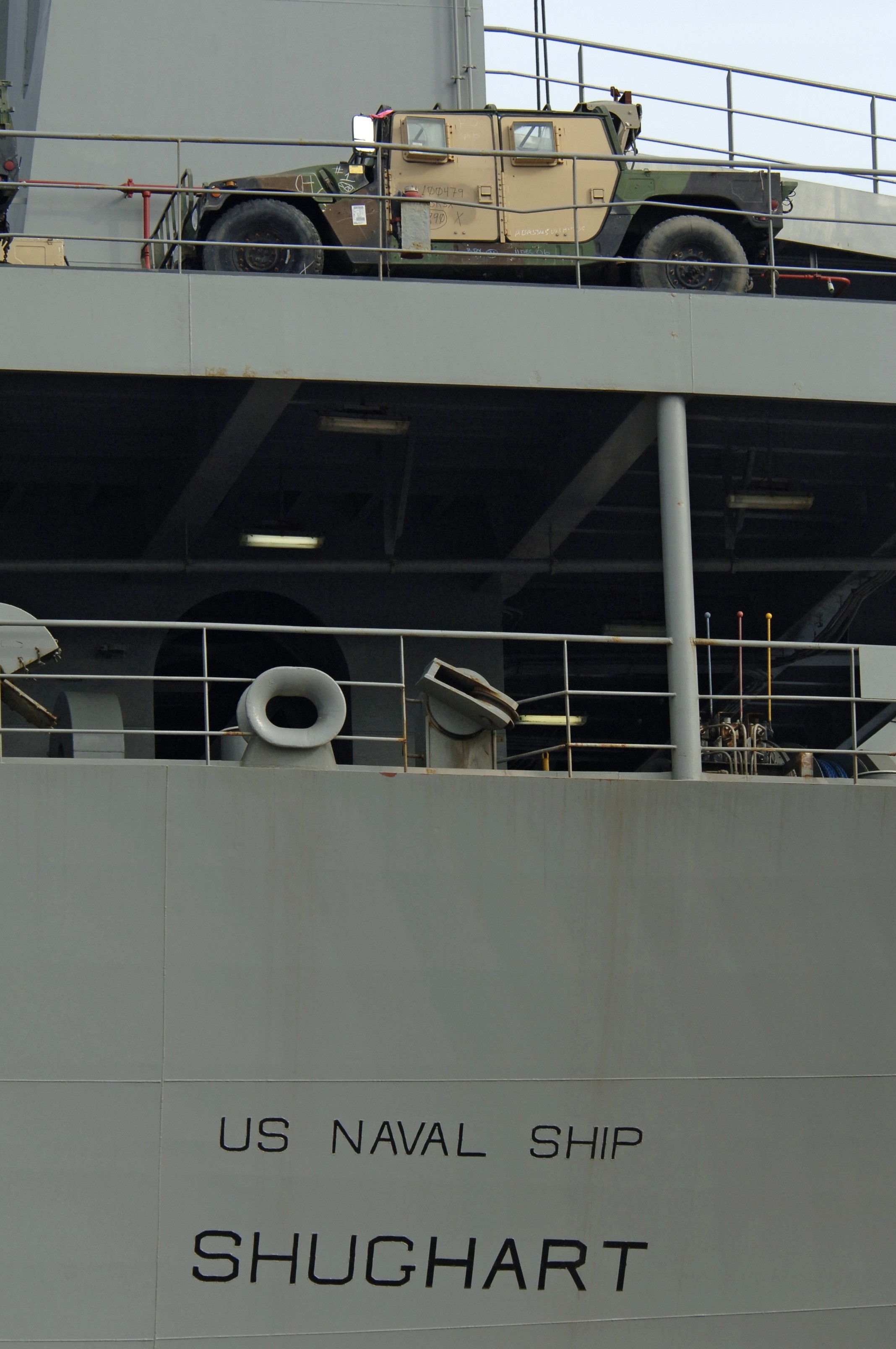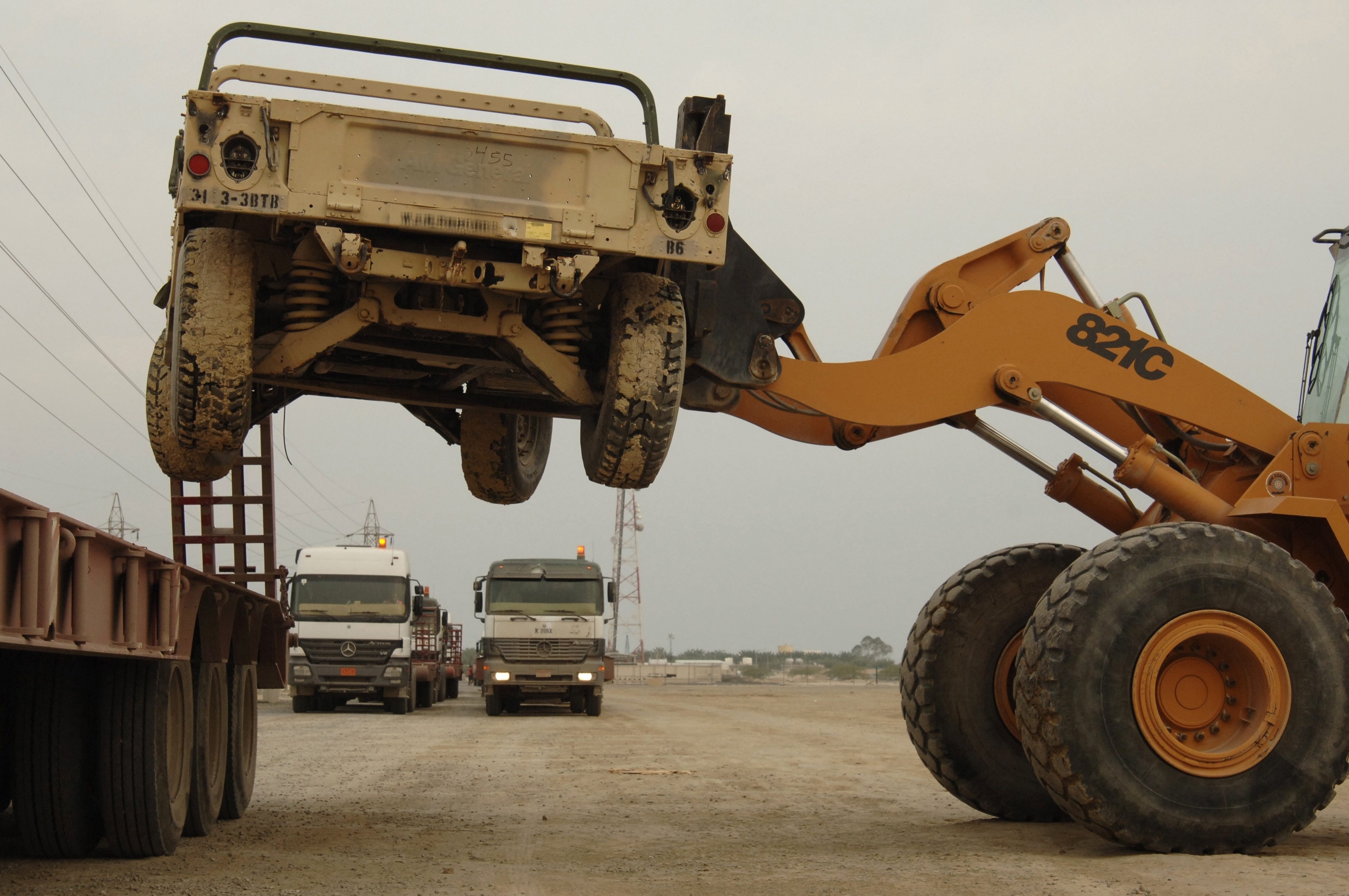KUWAIT CITY (American Forces Press Service, Aug. 2, 2007) - The way the United States ultimately leaves Iraq will send a strong message to America's friends and enemies alike, the general who would oversee the logistical exodus told reporters traveling here with Defense Secretary Robert M. Gates.
"Just as we are very deliberate and methodical going to war -- and the United States does that very well -- we also need to be very deliberate and methodical coming out," Lt. Gen. R. Steven Whitcomb, commander of 3rd U.S. Army, said yesterday.
Lt. Gen. Whitcomb said the way the United States redeploys its troops and equipment will send "a strategic message, not only to our friends here in the region, but to our adversaries or potential adversaries who will watch very carefully."
"So we can't just come down helter-skelter," he said. "It is the strategic communications aspect of not just driving things down and parking it here for three or four months. That is not the way to do it. We need to be deliberate, and we have that capacity to be deliberate."
A tank battalion commander during Operation Desert Storm, Lt. Gen. Whitcomb is no stranger to mass troop and equipment movements. He and his 2nd Battalion, 70th Armor, 1st Armored Division, troops got word that, "Hey, we have 72 hours to get from Kuwait the same way you came into Saudi Arabia," he recalled today.
"And it's pretty tough to do," he said.
Back in Kuwait again, this time commanding the massive logistical operation that supports Operation Iraqi Freedom, Lt. Gen. Whitcomb said he's not expecting that same breakneck type of departure.
"I don't think the decision is going to be the California Gold Rush," he said.
When the decision is made, there will be no need to come up with a plan. "We've got our plan, and it's a plan we've already executed previously," Lt. Gen. Whitcomb said. "We have a plan that we have executed for the past four years."
That plan has covered four major troop rotations through here to deploy troops into Iraq and redeploy others home. "We move 700,000 a year, which is the population of Alaska or Baltimore," Lt. Gen. Whitcomb said. Between September and December 2006 alone, the operation here moved 240,000 troops, he said.
Those movements refer to Soldiers moving into Iraq, those transiting through here for mid-deployment trips home and those returning to Iraq, he explained. "So you're moving them with a rucksack," he said.
What's not included, he said, are the tanks, Bradley fighting vehicles and other equipment that typically remains in Iraq for incoming troops to use.
But even with equipment included, Lt. Gen. Whitcomb said, the operation here could handle more than the "brigade-a-month" estimation some officials have voiced. "I don't know how much more," he said.
Moving heavy equipment complicates things considerably, he explained. "We have about 60,000 things from a tank to a Humvee trailer that rolls on wheels that we will eventually take out," he said. Drivers will bring some here. Others will need to be trucked.
Once they get here, vehicles will go through a detailed cleanup and inspection process that typically takes 10 days to two weeks.
First somebody goes through it to remove "everything from the M&M chocolate-covered peanut wrappers, the secret map that has the overlay on it," to ammunition that needs to be downloaded, Lt. Gen. Whitcomb said.
Next it goes to a wash rack and gets the heavy-duty cleaning needed to reach U.S. Department of Agriculture standards. "And they are quite tough," he said.
Cleaning a tank takes up to four days. A standard Humvee takes about four hours. Washers "get into every crevice so you don't have some critter who's been living there for a couple of years go back to the states," Lt. Gen. Whitcomb said.
Finally, before equipment is loaded into containers or loaded onto ships, U.S. Customs Service officials inspect it. From there, like the U.S. troops who relied on it in combat, it will begin its long journey home.




Social Sharing